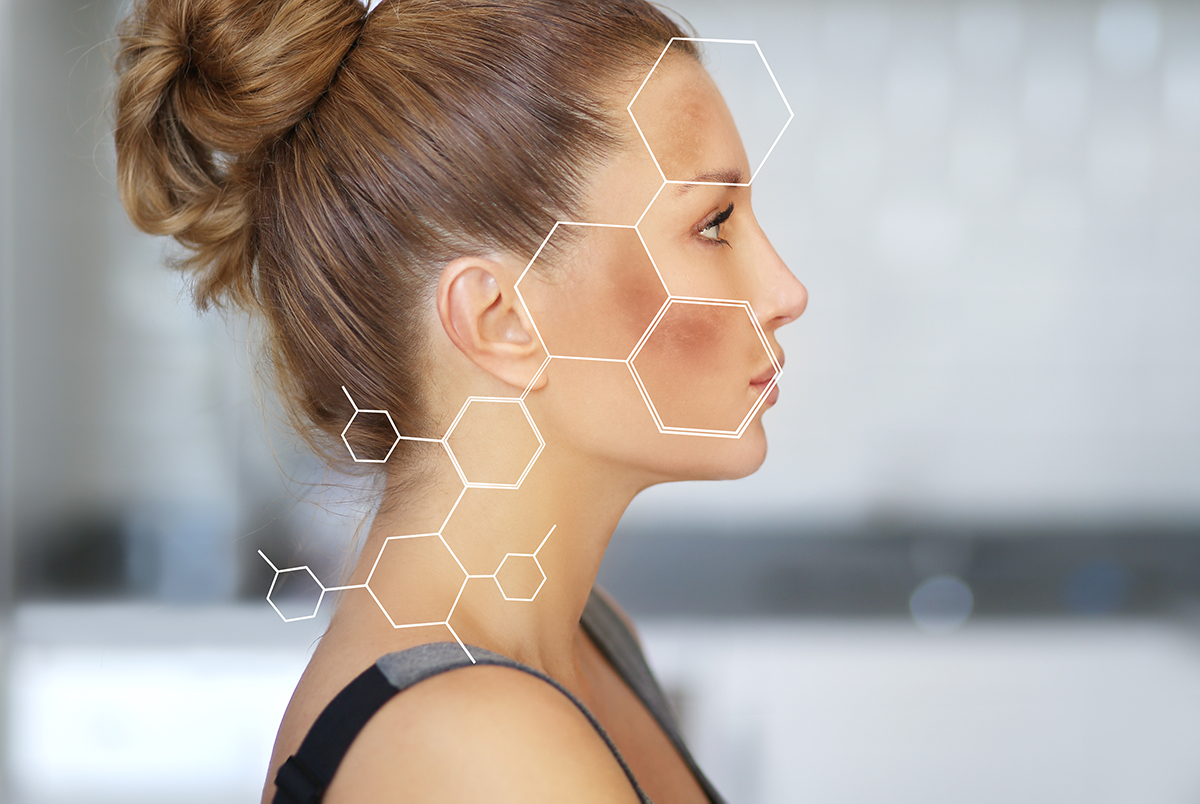
Of the conditions most commonly seen by skin health centers today, one of the most stubborn and mysterious is melasma. This type of hyperpigmentation presents in dense patches, often in a symmetrical pattern that is usually seen on the cheeks, forehead, upper lip and chin, and occasionally on other sun-exposed areas, such as the arms and chest.
Melasma is more common in women with Fitzpatrick skin types IV-VI. These individuals have more pigmentation in their skin.
Presentations and Types of Melasma
There are 3 different melasma presentations: centrofacial is the most common, appearing on the forehead, cheeks, upper lip and chin; malar - involving the cheeks and chin and ramus - lower cheek or jawline, known as the ramus, is where the mandibular pattern appears.
The different types of melasma are epidermal, dermal and mixed, with epidermal being the easiest to treat.
The etiology of melasma is still not fully understood, but many different factors have been implicated in this skin condition. Genetic factors can play a role in the formation of melasma within certain ethnicities, Asian and Hispanic being more prone to the condition. In addition to genetics, hormonal activity seems to be the most suggested reasoning for the occurrence of melasma. Pregnancy, contraceptives, hormone replacement therapy or hormone treatments can all be responsible for hormone fluctuation. Studies suggest that estrogen receptors on melanocytes can stimulate the cell to produce more melanin which is why it occurs more often in women.
Cream based treatments for Melasma
Cream-based retinoid treatments are effective when addressing melasma as well, since the inflammatory risk is so low.
- Retinoids represent the family of vitamin A. Not only are retinoids melanogenesis inhibitors, they also boost cell turnover, which helps accelerate the lifting of hyperpigmented cells. Retinoic acid (Retin A) is an effective topical ingredient, but can be too stimulating for some. Retinol is an effective alternative that is much less irritating and converts into retinoic acid within the skin.
- Hydroquinone can be either synthetically produced or naturally found in certain foods, such as berries and wheat. This ingredient inhibits copper from binding with tyrosinase and induces melanocyte-specific cytotoxicity. Although it can be a surface irritant for some skin types, using hydroquinone at a lower percentage, such as a 2%, will help avoid any undo irritation or inflammation in the skin.
- Vitamin C : The use of antioxidants such as vitamin C, and calming and soothing agents, can also help in the treatment of melasma as they prevent inflammation in the skin and therefore reduce the incidence of excess melanin formation.
Prevention of Melasma
A broad-spectrum suncreen with a minimum SPF of 30 is needed for patients experiencing melasma. The reactivity of skin prone to hyperpigmentation and melasma is exacerbated by UV-induced inflammation. Therefore, choosing an SPF with added melanogenesis inhibitors and antioxidants can provide additional treatment and pigment suppression along with necessary UV protection. All sunscreens must be applied 30 minutes before sun exposure and reapplied every 2 hours, or after swimming or perspiring, for maximum protection.
Chemical peels for melasma
Along with a gentle daily care regimen, adding professional treatments can provide a more beneficial outcome. Performing a series of gentle, superficial blended chemical peels containing a combination of lower percentage acids that also contain melanogenesis-fighting ingredients is an excellent way to accelerate the treatment of melasma. Low percentage blends of trichloroacetic acid and lactic acid help to gently remove dead surface cells without causing unwanted inflammation in the skin.
People who suffer from melasma often attempt to treat their condition using a variety of skin ointments, particularly the type noted for its effect on limiting the production of melanin.
Factional Laser for Melasma
Fractional laser resurfacing is a non-invasive, safe treatment that targets the outermost layer of skin and creates real, healthy improvement for melasma. Fractional resurfacing uses a specialized laser instrument that creates microscopic holes below the uppermost dermal layers. This treatment is an outpatient procedure that stimulates new tissue growth as well as an increased amount of collagen production for continued improvement over time.
In summary, melasma is a condition that needs to be managed. Comprehensive treatment with a qualified center who has multiple modalities for treating and management of melasma is generally the best option.
Back to Blog
All Rights Reserved. Web Design & Internet Marketing by Studio III
